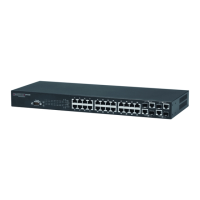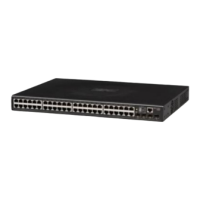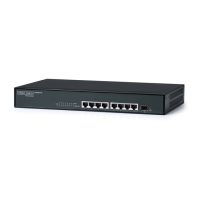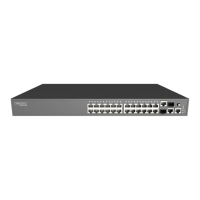C
HAPTER
8
| Spanning Tree Algorithm
Configuring Multiple Spanning Trees
– 209 –
WEB INTERFACE
To display interface settings for STA:
1. Click Spanning Tree, STA.
2. Select Configure Interface from the Step list.
3. Select Show Information from the Action list.
Figure 100: Displaying Interface Settings for STA
CONFIGURING MULTIPLE SPANNING TREES
Use the Spanning Tree > MSTP (Configure Global) page to create an MSTP
instance, or to add VLAN groups to an MSTP instance.
CLI REFERENCES
◆ "Spanning Tree Commands" on page 757
COMMAND USAGE
MSTP generates a unique spanning tree for each instance. This provides
multiple pathways across the network, thereby balancing the traffic load,
preventing wide-scale disruption when a bridge node in a single instance
fails, and allowing for faster convergence of a new topology for the failed
instance.
By default all VLANs are assigned to the Internal Spanning Tree (MST
Instance 0) that connects all bridges and LANs within the MST region. This
switch supports up to 33 instances. You should try to group VLANs which
cover the same general area of your network. However, remember that you
must configure all bridges within the same MSTI Region (page 197) with
the same set of instances, and the same instance (on each bridge) with the
same set of VLANs. Also, note that RSTP treats each MSTI region as a
single node, connecting all regions to the Common Spanning Tree.

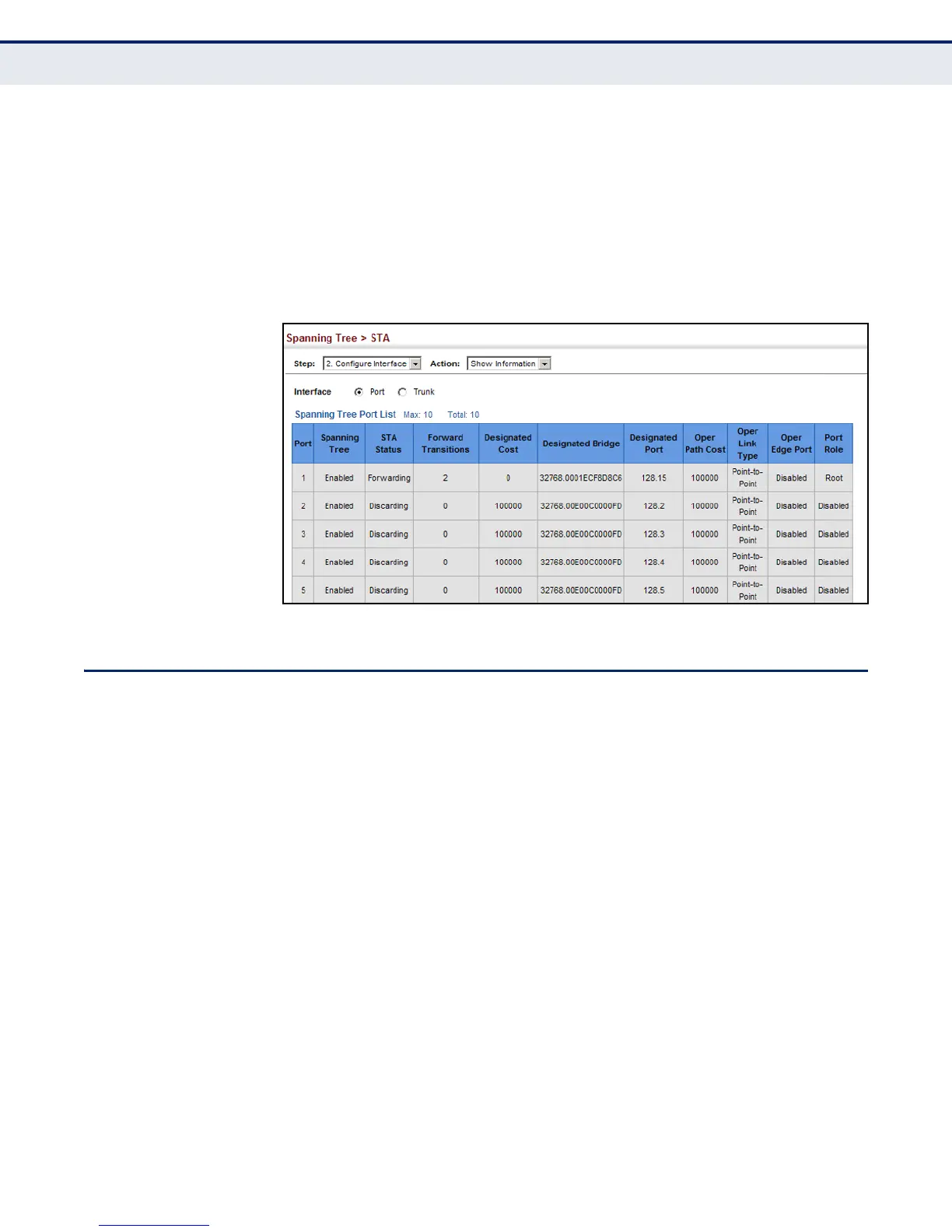